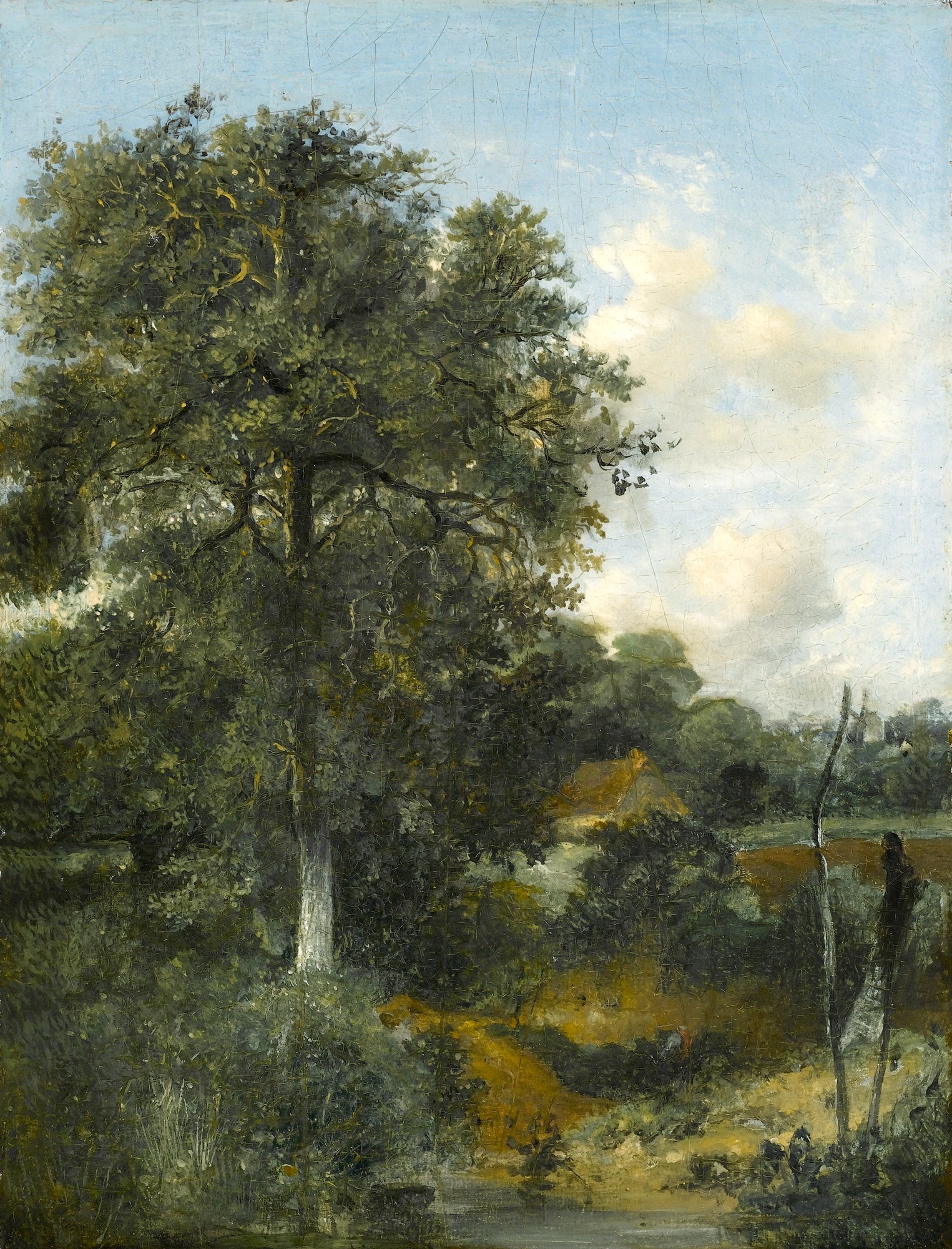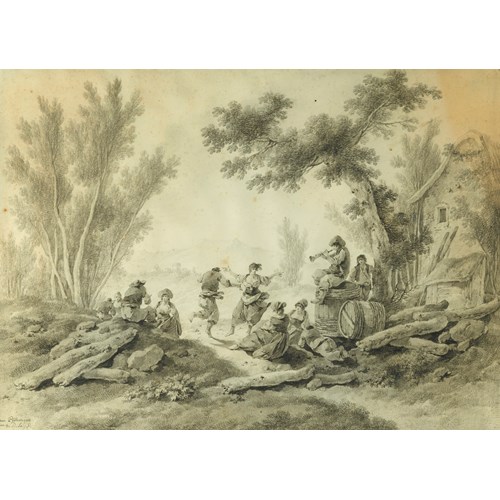John Crome
A Wooded Landscape with an Oak
Epoque 1750-1850, 18th century, 19th century
Origine England
Medium Oil on panel
Dimension 23.8 x 18.1 cm (9³/₈ x 7¹/₈ inches)
A larger but essentially similar study of a tree by Crome is The Poringland Oak in the Tate, London. In this work, a group of bathers are depicted in the foreground; the subject of the painting, however, is undoubtedly the stately oak. Crome’s later work reveals a growing interest in atmospheric effects, as indicated in the use of extensive shading in The Poringland Oak, which gives the impression of a slightly overcast afternoon, in contrast to the bright sunshine of A Wooded Landscape with an Oak. The differing tonalities have a marked impact on the overall mood of the paintings.
Crome was apprenticed to a coach and sign painter, Francis Whistler from the age of fifteen to twenty-two, after which he presumably continued to practise the trade as well as learning oil painting techniques. His early influences were the local artists William Beechey (1753-1839), John Opie (1761-1807)and Thomas Harvey. Harvey was a collector, as well as an amateur painter and had in his possession works by Dutch seventeenth-century masters such as Aelbert Cuyp (1620-1691), Jacob van Ruisdael (1628/9-1682) and Miendert Hobbema (1638-1709) as well as English eighteenth-century artists Thomas Gainsborough (1727-1788) and Richard Wilson (1713-1782), all of whom influenced Crome’s artistic development. Crome married in 1792 and soon afterwards established himself as a drawing teacher. He was one of the founders of the Norwich Society of Artists in 1803, and of the Norwich school of painters. Although during his lifetime his works were often criticised for their unfinished appearance, they became highly sought after following his death. In a letter written by the Rev. W. Gunn just weeks after Crome’s death, he reports that people were ‘crazy for his pictures’.² Crome was an art collector and etcher as well as a painter, and he is credited with having been at the forefront of the nineteenth-century etching revival in Britain. The large number of etchings that he produced help to establish a chronology for his paintings, none of which were signed. Crome’s sons, the most talented of whom was John Berney Crome (1794-1842), painted in his father’s manner and continued his teaching practice, although they did not achieve the same success as their father.
¹ William Wordsworth, The Oak and the Broom, a Pastoral.
² Rev. W. Gunn to J. Flaxman, 4 May 1821; Cambridge, Trinity College Library.
Epoque: 1750-1850, 18th century, 19th century
Origine: England
Medium: Oil on panel
Dimension: 23.8 x 18.1 cm (9³/₈ x 7¹/₈ inches)
Provenance: C. A. Sparke, St. Andrew's Castle, Bury St. Edmunds;
sold St. Andrew's Castle sale, Lacy Scott, 7-9 July 1927, lot 671 for 21gns;
where bought by Vicar Bros;
by whom sold for £400, 30th November 1927 to Frederick John Nettleford;
by descent to his daughter, Mrs Balene;
from whom purchased by 'a Gentleman';
by whom Sotheby's, London, 20 November 1985, lot 81, £6,600.
Literature: C. Reginald Grundy, A Catalogue of the Pictures and Drawings in the Collection of Frederick John Nettleford (London, 1933), vol. I, p. 186 (illustrated).
Plus d'œuvres d'art de la Galerie









